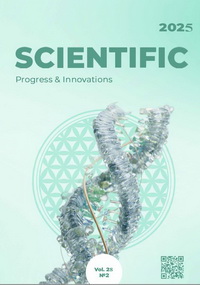Prevalence of eye pathologies in Siberian Husky dogs and characteristics of individual blood vessel parameters in the presence of neoplasms in the visual analyzer area
DOI:
https://doi.org/10.31210/spi2025.28.02.41Keywords:
uk, enAbstract
It is known that cancer is considered the most dangerous pathology for the lives of both humans and animals. Cancer is increasingly diagnosed among pets today and, unfortunately, they have a tendency to "get younger", that is, they are now increasingly diagnosed in young animals, including dogs. It should be noted that the disease is quite often diagnosed in certain breeds of dogs, so the purpose of the study was to determine the prevalence and changes in certain indicators of the bloodstream in Siberian Husky dogs in the presence of neoplasms in the visual analyzer area. The work was carried out in the conditions of the Veterinary Clinic "Diavet", Kyiv. All studies were carried out on Siberian Husky dogs of different ages and sexes. The conducted studies have shown that 41.35 % of the total number of dogs studied had inflammation of the conjunctiva of the visual analyzer (conjunctivitis). The share of dogs with cataracts and glaucoma was 14.42 % and 9.62 % of the total number of animals with pathologies of the visual analyzer, respectively. Keratitis was also diagnosed in dogs, which accounted for 12.50 %. Benign neoplasms (iris melanoma and heterochromia) were detected in 23 dogs (22.12 %). As a result of the conducted studies of blood serum parameters in dogs of different age groups with neoplasms in the visual analyzer area, significant differences were found. In particular, in young animals under three years of age, in which heterochromia was detected, the studied blood vessel parameters practically did not differ from similar indicators in clinically healthy animals. In animals older than 6 years with iris melanoma, a significant increase in the content of total protein in the blood serum was recorded by 1.08 times (p<0.05), globulins – by 1.20 times (p<0.05), creatinine – by 1.24 times (p<0.05), urea – by 1.20 times (p<0.05), circulating immune complexes – by 1.12 times (p<0.05) and a decrease in the content of albumins by 1.21 times (p<0.05). Changes in the blood serum of animals aged 3 to 5 years with iris melanoma were less pronounced. In particular, a significant increase in the content of globulins in the blood serum was recorded by 1.20 times (p<0.05) and urea – by 1.08 times (p<0.05) compared to the indicators in clinically healthy dogs. The conducted studies are relevant and supplement the existing scientific data on individual links of pathogenesis and will be useful for scientists and practicing veterinary doctors.
Downloads
Published
How to Cite
Issue
Section
License
Copyright (c) 2025 Scientific Progress & Innovations

This work is licensed under a Creative Commons Attribution 4.0 International License.

 Creative Commons Attribution 4.0 International Licens
Creative Commons Attribution 4.0 International Licens